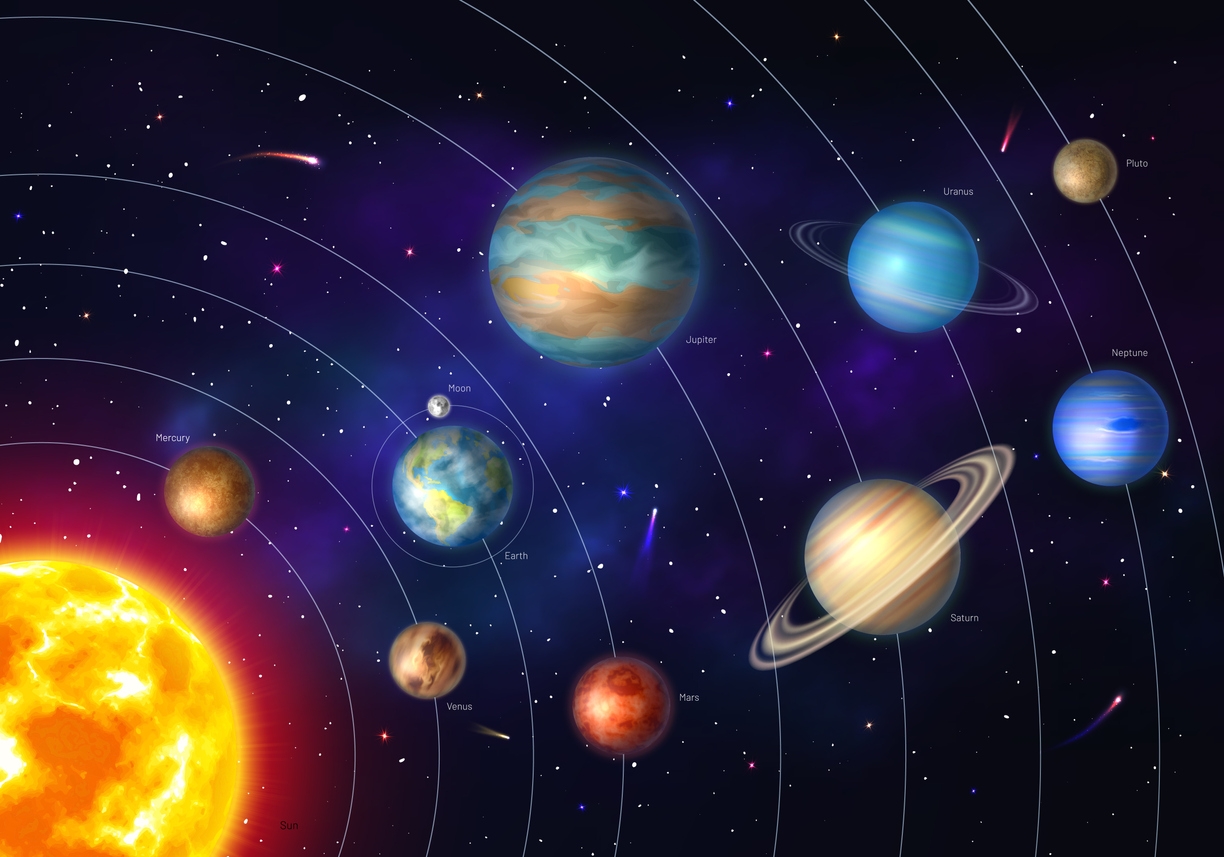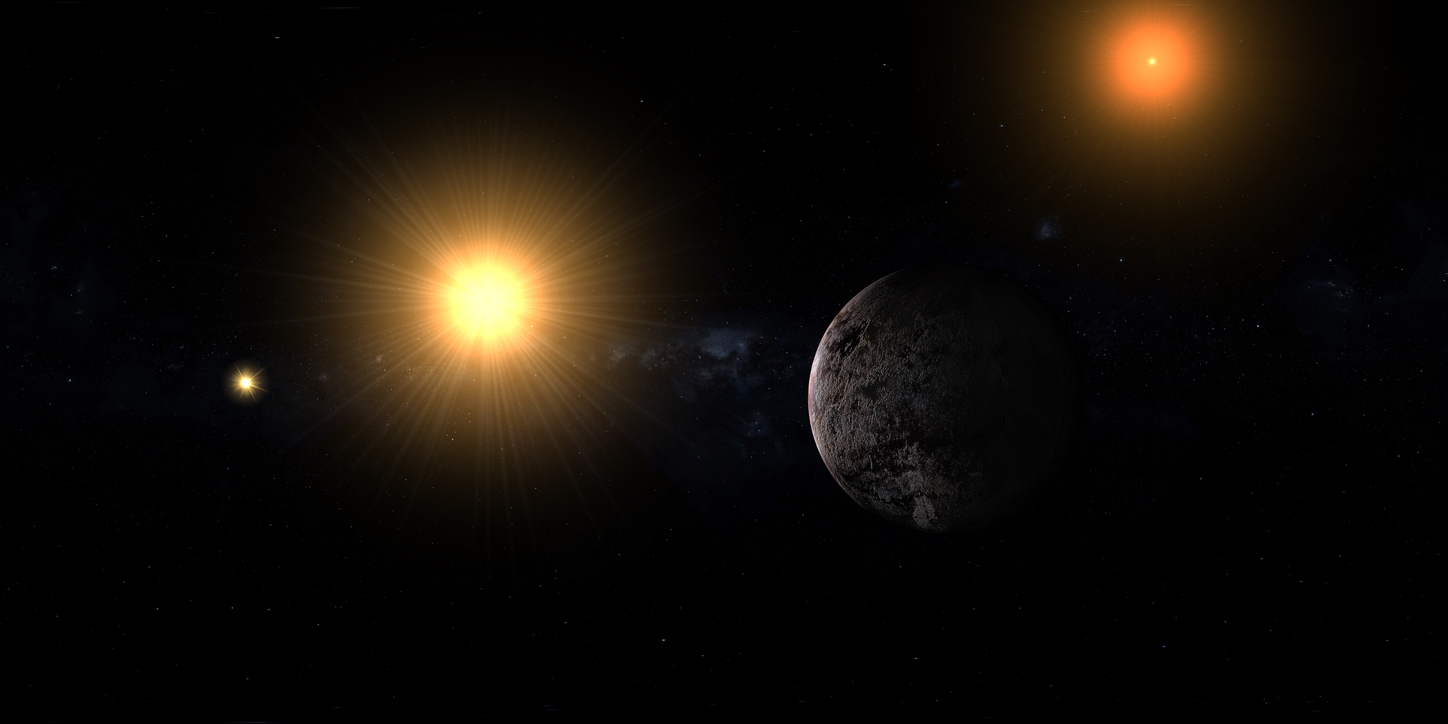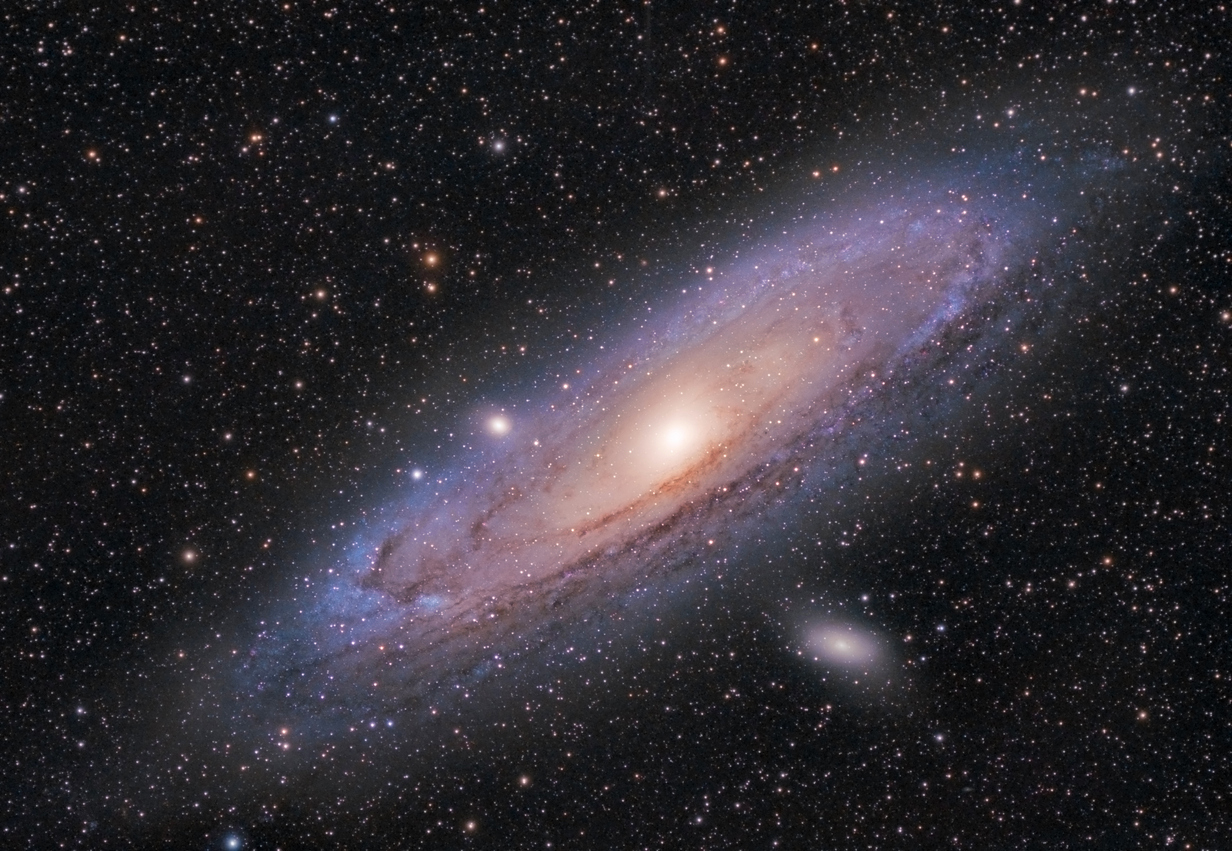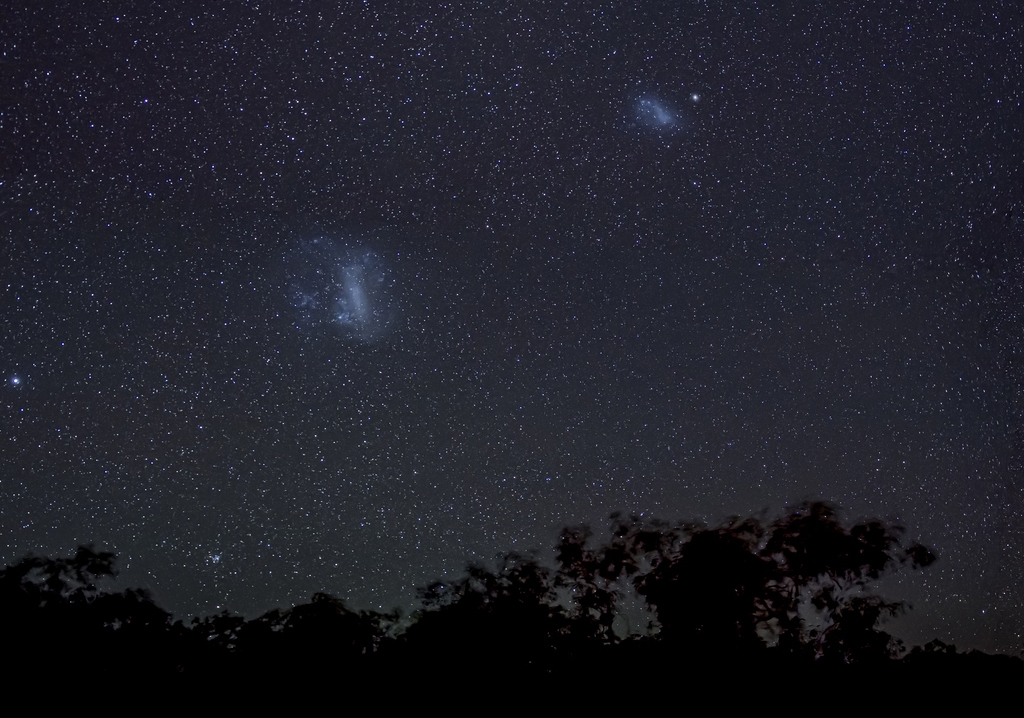The universe is a vast place and humanity has been trying to comprehend its immense size for centuries. Due to our limited scope of travel, most of us have only seen a fraction of the cosmos, and we only know about the small part of it that we can observe. But beyond the stars, there are galaxies, nebulae, and even further out, other universes. It’s hard to get your head around just how vast the universe is, so in this article, we explore the various ways to visualize cosmic distances in the universe.
Cosmic Distance Units
With so many stars located so far away from Earth, it can be difficult to conceptualize the enormous distance from one another. To measure the distances between celestial objects, astronomers use two primary units: the Astronomical Unit (AU) and the light-year (ly). [1]
Aspect | Astronomical Unit (AU) | Light Year (ly) |
Definition | The average distance between the Earth and the Sun, approximately 93 million miles (150 million kilometers). | The distance that light travels in one year, approximately 5.88 trillion miles (9.46 trillion kilometers). |
Numerical Value | 1 AU = 8.317 light-minutes approx | 1 light-year = about 63,241.1 AU approx |
Usage | Primarily used within our solar system to express distances between planets and objects. | Used to measure vast cosmic distances between stars and galaxies outside our solar system. |
Scope | Limited to our solar system | Encompasses interstellar and galactic scales |
Relation to Earth | Represents the Earth-Sun distance. | Represents the distance traveled by light in Earth's orbit around the Sun |
Expression | Not practical for interstellar distances | Standard unit for expressing vast distances between stars and galaxies |
Astronomical Unit
The Astronomical Unit (AU) is defined as the average distance between the Sun and Earth, roughly 93 million miles or 150 million kilometers. While this may seem like an inconsequential distance on an astronomical scale, one AU can actually be quite useful when measuring interstellar distances between Earth-like objects.
For example, the closest star to our Sun is Alpha Centauri A is about 2,67,000 AU away.
Light-Year
The light-year (ly) is a measure of distance used to calculate how far light travels over a period of one year. This measurement equates to about 6 trillion miles or 10 trillion kilometers.
Astronomers often use this unit to determine how far away stars and planets are located from Earth’s sun. Referring to the previous example, Alpha Centauri A is 4.3 light-years away.
Scaling Down: Our Solar System
As we continue our journey through the cosmos, it is time to focus on our planetary home. We will take a look at the distances between each of the planets that make up our Solar System and the outer reaches of the Kuiper Belt. Understanding these distances can help us better comprehend our place in the grand scheme of the universe.
| Planet | Distance from the Sun (AU) | Orbital Period (Earth years) |
| Mercury | 0.39 AU | 0.24 years |
| Venus | 0.72 AU | 0.62 years |
| Earth | 1.00 AU | 1.00 year |
| Mars | 1.52 AU | 1.88 years |
| Jupiter | 5.20 AU | 11.86 years |
| Saturn | 9.58 AU | 29.46 years |
| Uranus | 19.22 AU | 84.01 years |
| Neptune | 30.05 AU | 164.79 years |
| Kuiper Belt | 30 AU to 50 AU | (Collection of objects) |
It is important to note that due to various gravity of different objects in our solar system, these orbits can be distorted or shifted slightly from time to time. However, we now have a very clear understanding of distances between each planet in our Solar System when relative to its proximity to the Sun.
Visualizing the Solar System
To better understand cosmic distances, it is helpful to scale down our solar system to a manageable size. For example, imagine that our Sun is represented by a basketball and each planet is equal in size to a marble. Using this comparison, we can now start to visualize just how far apart celestial bodies are from each other.
The inner planets are Mercury, Venus, Earth and Mars. They are all located close to the Sun with Mercury being the closest. To visualize their distances within our solar system at a smaller scale we would need four marbles centered around the basketball representing our Sun. Mercury would be placed one foot away from the basketball, Venus two feet away, Earth three feet away and Mars four feet away.
The outer planets consist of Jupiter, Saturn, Uranus and Neptune. All of these are located much more distantly from the sun compared to their inner planet counterparts. Taking into account its greater distance from it than any other planet or our scaled version, Jupiter is placed eight feet away from our basketball (sun), Saturn 12 feet away, Uranus 18 feet away, and Neptune 24 feet. The model now accurately represents the relative cosmic distances within our solar system.
Lastly, we must take into account Plutoids and other Dwarf Planets located within The Kuiper Belt. [2] These can range anywhere between 30-50 feet away from our basketball (sun) depending on their size and distance from it.
Scaling Up: Stellar Neighborhood
When humans started space exploration, only a few celestial objects were visible to us. But with advances in technology and telescopes, astronomers have been able to observe distant galaxies and star systems that are billions of light-years away from Earth.
For example, Proxima Centauri is the closest star to us. [3] By learning more about its distance from Earth, we can start to develop an understanding of the immense scale that exists beyond our planet.
| Star | Distance from Earth | Distance to Proxima Centauri |
| Proxima Centauri | ~4.24 ly | — |
| Alpha Centauri A | ~4.37 ly | ~0.13 ly |
| Alpha Centauri B | ~4.37 ly | ~0.21 ly |
Proxima Centauri is located 4.2 light-years from Earth, which is equal to 25 trillion miles or 40 trillion kilometers. To put this into perspective, if we could travel at the speed of light, an impossibility due to Special Relativity, it would still take 4.22 years to arrive. [4]
The next closest star system to Proxima Centauri is Alpha Centauri, consisting of two main stars: Alpha Centauri A and Alpha Centauri B. It is located 4.37 light-years away from us. This places the two stars as being about 14 trillion miles (22 trillion kilometers) away from Earth.
On the other hand, researchers used data collected from the Hubble Space Telescope to study a supermassive black hole located at the heart of quasar 3C 186. [5] It was determined that this black hole is over 13 billion light-years away from us, making it one of the most distant objects ever discovered in space.
Galactic Distances
It’s breathtaking to think about just how large and complex the Universe can be, measuring infinite distances with fractions we can barely comprehend. Exploring and understanding distances between galaxies helps us draw closer towards comprehending our place within the Universe and just what lies beyond our stars.
Understanding the Milky Way’s Dimensions
The Milky Way is believed to measure somewhere between 100,000 and 120,000 light years wide. Its center is located approximately 26,000 light years from Earth in the direction of Sagittarius. [6] Our Solar System is located approximately two thirds of the way out from the center in an area known as the Orion Arm. [7]
Given that a single light year is equal to 6 trillion miles, it’s easy to see how incomprehensible these galactic distances can be. To put it into perspective, if you were to travel away from Earth at the speed of light for one full year, you would still only cover one tiny fraction of the Milky Way’s total size.
As you travel further away from the galactic center, the density of stars decreases exponentially until you reach the outer rim. This is because stars form inside of giant clouds called nebulae, which are typically located near the center of a galaxy. As you venture further outwards, these nebulae become increasingly sparse.
Extragalactic Distances
| Galaxy | Distance from Milky Way (millions of light-years) | Significance |
| Andromeda Galaxy | ~2.5 | Our closest galactic neighbor |
| Triangulum Galaxy | ~2.9 | Member of the Local Group |
| Large Magellanic Cloud | ~0.163 | Satellite galaxy of the Milky Way |
| Small Magellanic Cloud | ~0.2 | Another Milky Way satellite galaxy |
| Whirlpool Galaxy | ~23 | Notable for its classic spiral structure |
| M87 (Virgo A) | ~53 | Contains a supermassive black hole at its center |
| GN-z11 | ~13,400 | One of the most distant galaxies; provides insight into the early universe |
The majority of galaxies in our night sky are much farther away than we might expect. However, there are a few which can be seen using only the natural eye and binoculars. The most notable of these galaxies is the Andromeda Galaxy (M31), part of the Local Group. Located at a distance of roughly 2.5 million light years from Earth.
Andromeda Galaxy
As one of the largest galaxies in the Local Group, the Andromeda Galaxy spans an impressive 220,000 light years across (for comparison, our Milky Way is only roughly 100,000 light years across). [8] Due to its proximity to Earth, we are able to view this system in its entirety when looking through either our naked eyes or binoculars. This neighbor is visible in the Northern Hemisphere during autumn and winter months.
Although it does appear as one single object in the night sky, it is actually composed of many different star clusters and galactic arms that have been pulled together by their mutual gravitational attraction over billions of years.
Magellanic Clouds
Similarly, two smaller galaxies, the Magellanic Clouds, are at a distance of 160,000 and 210,000 light years away. [9] These two irregular dwarf galaxies are thought to have been gravitationally bound to our own Milky Way, hence are orbiting around it.
Visually representing these distances can help provide a better understanding of just how far away these galaxies are from us. The Andromeda Galaxy has an apparent magnitude of 3.4, making it visible to the naked eye under dark skies, while both Magellanic Clouds have apparent magnitudes below 6 and are therefore not visible without binoculars or a telescope. On clear nights, they can be seen as faint smudges in the sky.
The farthest galaxy ever observed by astronomers is GN-z11 which measures 13 billion light years away from us here on Earth. [10] That means that we are seeing this galaxy as it appeared 13 billion years ago, when our Universe was only 3% of its current age.
Conclusion
Since antiquity humans have looked up at night with a sense of wonder, inspired by the enormity of the universe around them. Over time our understanding of space has evolved as technology and science have advanced. While we once believed our moon was made of green cheese and planets revolved around us, we now know that Earth is one planet among many in an unimaginably vast universe.
Visualizing cosmic distances can help us gain further insight into our place within the vast expanse of the universe. By understanding the distance between various cosmic bodies, we gain a better understanding of how far apart we are in both our own galaxy as well as others in space. Ultimately, this knowledge helps us appreciate just how small we are compared to the universe itself.
References
- Dyches, P. (2020, May 18). Cosmic distances – NASA solar system exploration. NASA Solar System Exploration. https://www.google.com/amp/s/solarsystem.nasa.gov/news/1230/cosmic-distances.amp
- Kuiper belt. (n.d.). NASA Solar System Exploration. https://solarsystem.nasa.gov/solar-system/kuiper-belt/overview/
- Proxima Centauri, closest star to our sun. (2021, October 10). EarthSky | Updates on your cosmos and world. https://earthsky.org/astronomy-essentials/proxima-centauri-our-suns-nearest-neighbor/
- Imagine the universe! (2020, December 8). Imagine the Universe!. https://imagine.gsfc.nasa.gov/features/cosmic/nearest_star_info.
- Gravitational wave kicks monster black hole out of galactic core. (2017, March 23). NASA. https://www.nasa.gov/feature/goddard/2017/gravitational-wave-kicks-monster-black-hole-out-of-galactic-core
- What is the Milky Way? (2021, August 24). EarthSky | Updates on your cosmos and world. https://earthsky.org/astronomy-essentials/what-is-the-milky-way-galaxy/
- Ask an astronomer. (n.d.). Cool Cosmos. https://coolcosmos.ipac.caltech.edu/ask/62-What-is-Earth-s-location-in-space-
- Facts about the Andromeda Galaxy. (n.d.). Centre of Excellence | Online Courses & Distance Learning Centre. https://www.centreofexcellence.com/facts-about-the-andromeda-galaxy/
- (n.d.). ABC (Australian Broadcasting Corporation). https://www.abc.net.au/science/starhunt/tour/virtual/magellanic-clouds/
- ScienceAlert Staff. (2021, January 5). Astronomers find the oldest, most distant galaxy to date. ScienceAlert. https://www.sciencealert.com/astronomers-find-the-new-farthest-galaxy-a-staggering-13-4-billion-light-years-away






